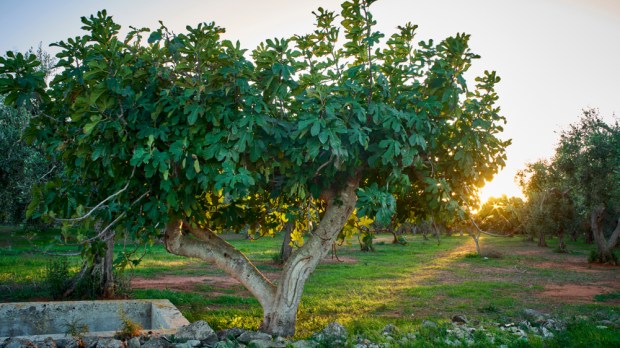Lenten Campaign 2025
This content is free of charge, as are all our articles.
Support us with a donation that is tax-deductible and enable us to continue to reach millions of readers.
One could say the Bible (both the Hebrew and the Greek, the Old and the New Testaments) revolves around certain trees. Whereas typology understands Christ’s Cross as being the new and true Tree of Life (Christ himself being the fruit of this tree), and the Tree of Knowledge of Good and Evil is often thought of as being an apple tree because of a certain medieval pun (mālum, Latin for apple, is quite close to malum, “evil”), fig trees don’t seem to have a defined symbolism of their own. Sure, the expression “fig leaf” is commonly used figuratively to imply one is covering something shameful with a relatively innocuous thing (in a clear reference to the book of Genesis, where we find Adam and Eve using fig leaves to cover their nudity after they ate the forbidden fruit), but that tells us nothing about any biblical symbolism attributed to fig trees themselves.
Interestingly, the fig is the third kind of tree mentioned by its name in the Bible, right after these other two trees (that is, that of life and the tree of knowledge of good and evil). But fig trees are actually almost everywhere. In Deuteronomy, the promised land is described as a land “of vines, fig trees, and pomegranates.” In the Song of Solomon, the fig tree gives its fruit early “in the year of love.” In the second book of Kings, the Assyrian commander offered every deserter from the army of Jerusalem “his own vine and fig tree.” It can be seen then that the fig tree, in the Bible, indicates prosperity. Having one’s own fig tree is, then, a signal of personal wealth and well-being. Then why would Jesus curse the fig tree, as we see is the case in the gospels of Matthew and Mark? Or why would the owner of a fig tree, as that of the parable, want to cut it down?
If a fig tree is a symbol of prosperity and personal wealth, a barren fig tree is then its antithesis. That much is clear. Jesus’ cursing of the barren fig tree has been read as an affirmation of Jesus’ divinity, which is expressed in his having dominion and authority over nature, sure, but there is another reading that follows this symbolism and relates it to a certain kind of wealth. If prosperity is conceived of as related to the abundance of fruits from the fig tree, spiritual prosperity is related to one’s own “good fruit,” that is, the good actions of the faithful. Just as Adam and Eve used the fig trees to cover their nudity (as they felt shame and embarrassment), when we don’t give any kind of spiritual fruit we are in fact left with nothing but “leaves,” a “barren” outward appearance that tries to “cover” the fact that we are not producing anything for God or our neighbor.

